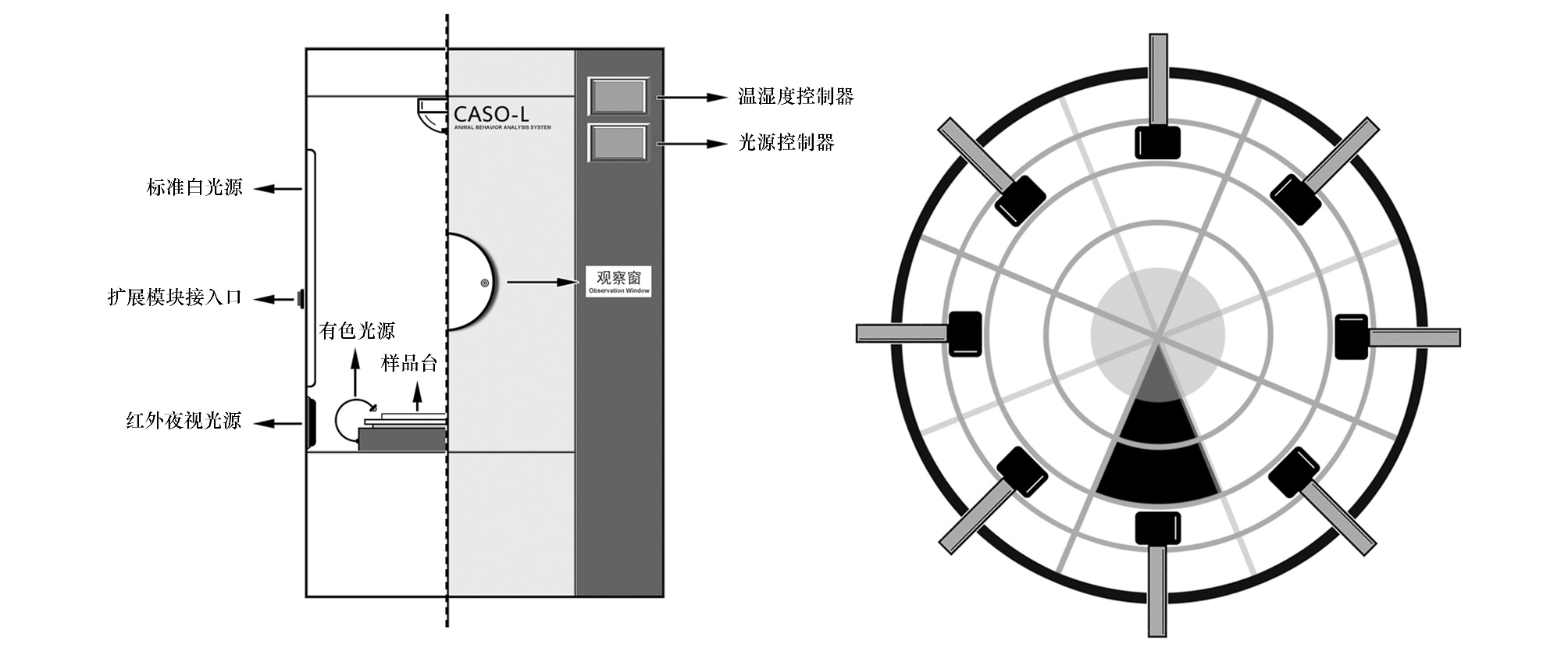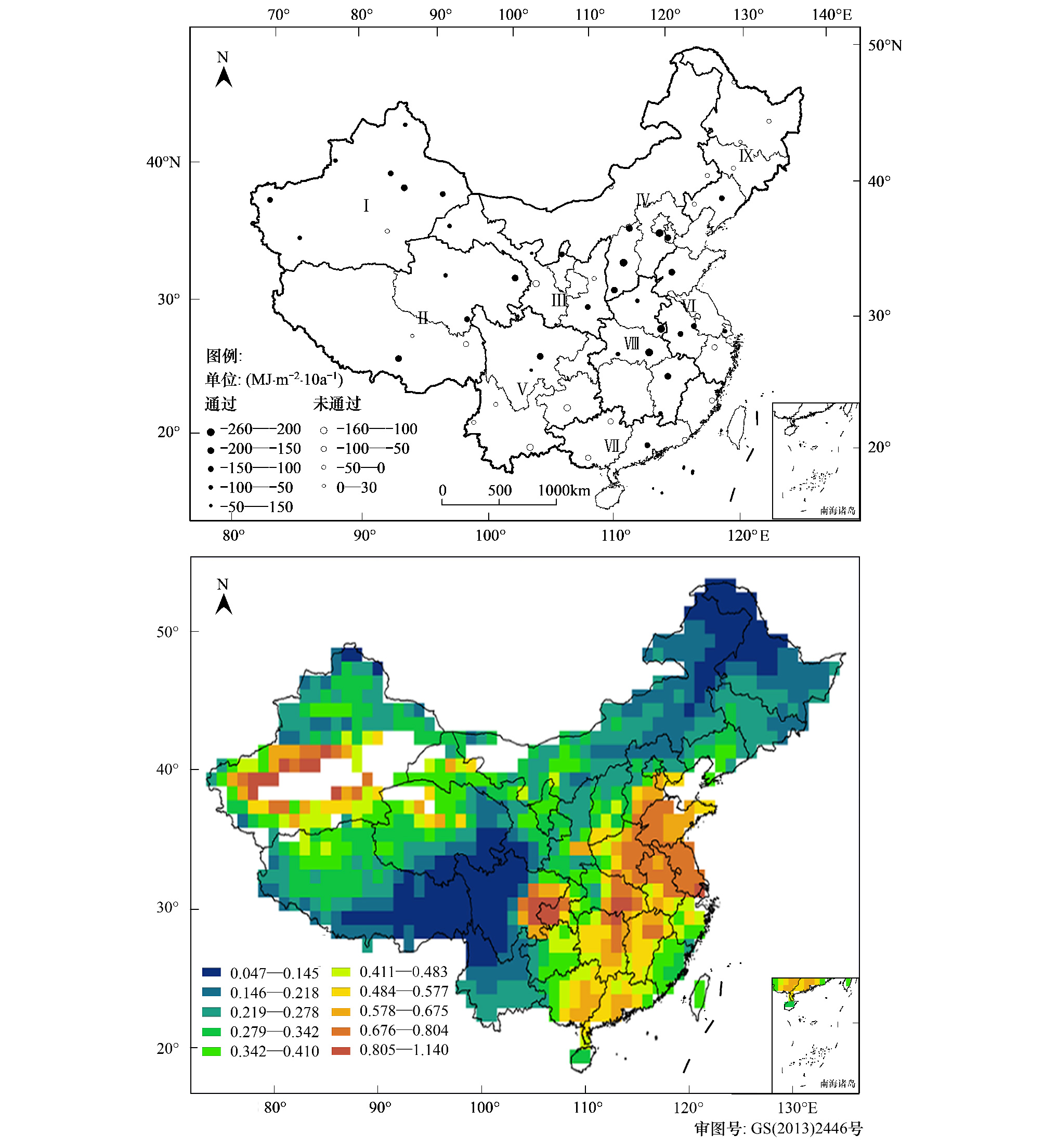文章信息
- 王甦, 郭晓军, 张君明, 张帆
- WANG Su, GUO Xiaojun, ZHANG Junming, ZHANG Fan
- 异色瓢虫不同光环境下的交配行为
- Copulatory behavior of predacious ladybird Harmonia axyridis (Coleoptera: Coccinellidae) under different illuminative conditions
- 生态学报, 2014, 34(24): 7428-7435
- Acta Ecologica Sinica, 2014, 34(24): 7428-7435
- http://dx.doi.org/10.5846/stxb201303210473
-
文章历史
- 收稿日期:2013-03-21
- 网络出版日期:2014-03-19
昆虫的繁殖作为一种重要的生理活动,会受到诸如食物质量丰度、寄主环境的优劣以及温湿度等自然环境条件的显著影响,继而严重影响到昆虫种群的定殖、扩散及发展[1]。大量研究表明,自然环境条件的变化不但会改变昆虫自身交配器官的发育、功能及其相关生理代谢途径,还会对昆虫的求偶以及交配行为产生影响[2]。光环境作为自然环境条件中对生物体影响最为重要的可变因素之一,其对昆虫在生长发育、呼吸代谢、捕食能力等方面的影响已经为人们所关注[3, 4, 5]。大量研究表明,光照强度、光周期、照射光波长以及植物表面的折射光等光环境因素,能够影响多种捕食性及寄生性天敌的生长发育以及繁殖能力[6, 7, 8, 9]。光周期及照射光波长会对赤星瓢虫Coelophora saucia生长发育及繁殖效率产生显著影响[8]。光照强度的交替变化会诱导多种捕食性瓢虫进入繁殖滞育状态[10]。较高的光照强度会显著提升丽蚜小蜂对温室白粉虱的寄生率[11]。而我们前期的野外调研结果表明,利用异色瓢虫对特殊颜色的趋性差异,可以大幅提高野外越冬样本的采集效率[12]。
异色瓢虫Harmonia axyridis (Pallas) 属鞘翅目(Coleoptera)瓢虫科(Coccinellidae),是一种原产于古北区南部及东洋区的捕食性瓢虫,能够取食同翅目蚜科、粉虱科、蓟马科以及木虱科的多种植食性昆虫,自20世纪初期开始被作为有效生物防治天敌而在世界范围内得到利用和推广[13]。 异色瓢虫具有极强的环境适应能力,其在不同地理区域以及不同生境条件下均表现出优良的繁育定殖能力。异色瓢虫自身的交配行为及繁殖效率同样受自身表型特征,季节差异,种群密度等因素的影响[14]。有证据表明,异色瓢虫在不同季节中的交配选择具有显著的交替性,并且可能与光环境变化有一定的关联。而这种随环境变化选型交配行为也显示着异色瓢虫自身对环境的高可塑性[15]。
在常规光环境对昆虫行为影响的研究中,利用图像采集技术对昆虫行为进行记录再分析已经成为主要技术手段之一[16, 17]。但是常规的光环境处理具有一定的局限性,尤其是在弱光强和黑暗条件下图像采集会受到极大的影响,无法正常对研究对象的行为进行记录。因此如何解决黑暗条件下的昆虫行为研究已经成为行为学研究技术领域的一个瓶颈[18]。本试验借助带有红外夜视图像采集功能的卡索动物行为研究系统(Camsonar,CASO-L),可以对昆虫在弱光以及黑暗条件下的行为进行实时监测记录,继而完成对全部光环境变化下的昆虫交配行为的分析研究。因此,本文以不同光照强度、光周期以及照射光波长为处理,观察记录光环境因素对异色瓢虫交配行为及繁殖力的影响,通过量化分析其在不同光环境下的几种行为参数,揭示异色瓢虫对光环境的感受差异,了解其在环境适应能力上的变化规律,为更加深入地开发利用以异色瓢虫为代表的捕食性瓢虫提供试验依据和理论基础。
1 材料与方法 1.1 异色瓢虫采自北京市门头口区灵山自然保护区内。在室内条件下(温度(25±1)℃,湿度65%,光照强度1500 lx以及光照周期为12光 ∶ 12暗),将采回的异色瓢虫置于养虫笼内(铝合金+60目纱网制,45.0 cm×45.0 cm× 50.0 cm),每笼控制密度50—80头,以豌豆修尾蚜Megoura japonica饲养,建立实验饲养群,扩繁三代以上供试。
1.2 观察设备采用卡索动物行为习性观察分析系统(CASO-L,Camsonar,London,UK; Camsonar,2012)进行试验观察。该系统(图 1)共包括: 人工气候室; 光敏控制器; 行为监测及图像采集系统; 多波段LED光源系统; 红外夜视图像采集器及 其它功能扩充模块(如:外源气体输入等)。

|
| 图 1 动物行为习性观察系统 (Camsonar,CASO-L) 及光波长试验载样盘结构示意图 Fig. 1 he structural representation of animal behavior and habitus observation system (Camsonar,CASO-L) and sample plate was used in wavelengths lights experiment |
操作方法:调节顶置动物行为图像采集系统,将焦点聚于样品盘中央(依照本试验样品活动区域,设置扩散范围半径为15.0 cm),放置一个直径为5 mm的黑色滤纸片于样品盘中央,并调节图像采集色差及对比度,使其满足行为采集要求。设定样品盘转速为1.5 r/min,设备预运行1 h后开始异色瓢虫交配行为观察研究工作。行为仪其它相关参数的设定如下各项研究具体内容设置。
1.3 光照及黑暗条件下异色瓢虫的交配行为取羽化后10日龄未交配的黑底四窗型异色瓢虫雌雄虫1对,放于样品盘中央并罩以透明玻璃皿(直径15.0 cm,高1.0 cm),同时补充100头豌豆修尾蚜若虫作为猎物。至样本放入后开启行为图像采集系统,连续观察采集异色瓢虫的行为动态24 h。当环境伺服箱光环境自光处理转换成暗处理时,手动开启红外夜视拍摄系统,对黑暗条件下的异色瓢虫交配行为进行采集记录。观察结束后,将雌成虫置于塑料培养皿(直径为9.0 cm)中继续饲养至产卵,记录10日内累计产卵量并统计子代1龄幼虫的孵化率。10次重复。观察(环境伺服箱)环境条件同1.1。
1.4 不同光照强度下异色瓢虫的交配行为研究设置环境伺服箱光照强度分别为600、900、1200、1500、1800 lx及2100 lx 6个处理,其余均同1.3。按1.3方法分别观察不同光照强度处理下的异色瓢虫交配行为。
1.5 不同光照周期下异色瓢虫的交配行为研究设置环境伺服箱光照周期(光 ∶ 暗)分别为为0 ∶ 24、6 ∶ 18、12 ∶ 12、18 ∶ 6及24 ∶ 0,其余环境条件、供试异色瓢虫处理与仪器操作使用同1.3。连续观察采集异色瓢虫的行为动态48 h,每处理重复20次,其它观察和试验方法同1.3。
1.6 不同颜色(环境光波长)环境下异色瓢虫的交配行为研究设定样品盘转速为0。按照图 1-b中所示,用铝条(高1.5 cm)将样品盘按照不同颜色LED光源进行分隔。设定各LED光源的波长值为:紫色(395 nm),蓝色(480 nm),绿色(510 nm),黄色(575 nm),橙色(610 nm)及红色(685 nm)。分别将一对异色瓢虫(同1.3)放置于各颜色光源试验区内,并将整个试验区罩于一透明的玻璃皿内(直径=40 cm,高1.5 cm)。设置环境伺服箱为暗处理,开启各颜色LED光源,并手动开启红外夜视拍摄系统,对不同颜色条件下的异色瓢虫交配行为进行采集记录24 h。其它试验观察同1.3。
1.7 交配行为数据获得及统计分析利用Camsonar行为视讯分析系统,Camsonar Image MP(CIMP系统)1.0对所得的各行为视频记录进行自动分析。各行为边际节点设置如下:1)求偶行为,设定接触距离为1.2—2.0 mm,持续时间为2.5—3.0 s;2)交配行为,设定接触距离为0.1—0.5 mm,持续时间>120 s。CIMP系统基于上述节点参数,对视频记录中异色瓢虫的行为进行自动分类输出各项交配行为定量数据,包括:求偶次数;交配预备时间(交配开始时间-样品初次置入时间);交配持续时间(异色瓢虫分离时间-交配开始时间);交配间隔时间(上次交配结束时间-次回交配开始时间);本试验以统计分析软件SPSS 20.0 (SPSS,2011)对本试验种所得各项数据进行分析。以各光照条件处理为独立样本对各交配行为量化结果进行单因素方差分析,并以LSD多重比较对不同处理水平间的差异在P=0.05水平下进行显著性分析。
2 结果与分析 2.1 光照及黑暗条件下异色瓢虫的交配行为异色瓢虫在光照及黑暗条件下的交配行为量化比较结果参见表 1。 经独立样本的t检验分析,雄虫的求偶次数在光照条件下显著多于黑暗条件(t=4.195,df=37,P<0.01);雌雄虫的交配预备时间在光照和黑暗条件下均未表现出显著差异(t=1.700,df=37,P=0.097);异色瓢虫在光照条件下的交配持续时间(t=-6.485,df=37,P<0.01)与交配间隔时间(t=-4.102,df=37,P<0.01)均显著短于黑暗条件。交配后的雌虫10日内累计产卵量不受光环境的影响(图 2,t=-0.568,df=37,P<0.01),而其一龄幼虫的孵化率在黑暗条件下显著大于光照条件(图 2,t=-4.842,df=37,P<0.01)。

|
| 图 2 光照及黑暗条件下异色瓢虫雌成虫的10日累计产卵量及1龄幼虫孵化率 Fig. 2 The accumulative fecundity within 10 days and 1st instar larvae hatchability of H. axyridis female in light and dark environments |
| 光环境Luminous Environment | 求偶次数Courtship number | 交配预备时间/minPre-duration of mating | 交配持续时间/minMating duration | 交配间隔时间/minIntervals betweencopulations |
| *表中各项数据均为平均值±标准误 | ||||
| 光照 Light | 4.2±0.2 | 380.4 ± 10.5 | 81.2 ± 3.3 | 303.6 ± 16.9 |
| 黑暗 Dark | 1.3 ± 0.1 | 343.2 ± 9.8 | 135.1 ± 7.8 | 410.3 ± 13.4 |
异色瓢虫雄虫的求偶次数(F=0.721,df=5,54,P=0.611),以及雌雄虫交配前的预备时间(F=1.354,df=5,54,P=0.256)长短均不受环境光照强度的影响;异色瓢虫在低光照强度下(600lx和900lx),其交配持续时间(F=11.163,df=5,54,P<0.01)及交配间隔时间(F=4.109,df=5,54,P<0.01)均显著长于其它光照强度处理,而在2100 lx处理下的时间均为最短(表 2)。异色瓢虫雌成虫在不同光照强度处理间的10日内累计产卵量无显著差异(图 3,F=0.117,df=5,54,P=0.988),而1龄幼虫孵化率随光照强度的增加而显著降低(图 3,F=6.261,df=5,54,P<0.01)。

|
| 图 3 不同光照强度条件下异色瓢虫雌成虫的10日累计产卵量及1龄幼虫孵化率 Fig. 3 The accumulative fecundity within 10 days and 1st instar larvae hatchability of H. axyridis female in different illumination intensities |
| 光照强度lxIllumination Intensity | 求偶次数Courtship number | 交配预备时间/minPre-durationof mating | 交配持续时间/minMating duration | 交配间隔时间/minIntervals betweencopulations |
| 600 | 6.4 ± 0.6 a | 367.8 ± 10.3 a | 126.3 ±6.2 a | 395.8 ± 20.3 a |
| 900 | 6.9 ± 0.6 a | 371.4 ± 10.4 a | 131.8 ± 4.6 a | 382.4 ± 16.2 a |
| 1200 | 6.3 ± 0.6 a | 365.3 ± 20.2 a | 97.2 ± 8.1 b | 337.5 ± 15.7 b |
| 1500 | 5.8 ± 0.8 a | 403.1 ± 22.3 a | 100.2 ± 9.1 b | 334.9 ± 18.5 b |
| 1800 | 5.5 ± 0.7 a | 398.2 ± 22.1 a | 84.0 ± 5.4 bc | 339.6 ± 23.8 b |
| 2100 | 5.4 ± 0.8 a | 409.4 ± 11.5 a | 74.2 ± 6.5 c | 288.1 ± 18.1 c |
异色瓢虫雄虫的求偶次数在各光周期处理间随光照时常的延长而显著增加(表 3,F=4.804,df=4,43,P<0.01)。与之相反,异色瓢虫的交配预备时间(F=7.808,df=4,43,P<0.01)、交配持续时间(F=11.295,df=4,43,P<0.01)以及交配间隔时间(F=13.199,df=4,43,P<0.01)均随着光照时常的延长而显著缩短(表 3)。异色瓢虫在不同光周期下的的产卵情况如图 4所示。异色瓢虫在10日内的累计产卵量(F=10.815,df=4,43,P<0.01)及1龄幼虫的孵化率(F=4.858,df=4,43,P<0.01)均随光照时常的延长而显著增加。

|
| 图 4 不同光周期条件下异色瓢虫雌成虫的10日累计产卵量及1龄幼虫孵化率 Fig. 4 The accumulative fecundity within 10 days and 1st instar larvae hatchability of H. axyridis female in different photoperiods |
| 光周期 (L ∶ D)Photoperiods | 求偶次数Courtship number | 交配预备时间/minPre-durationof mating | 交配持续时间/minMating duration | 交配间隔时间/minIntervals betweencopulations |
| 0 ∶ 24 | 3.2±0.3b | 410.7±14.1a | 140.5±10.4a | 335.2±10.5a |
| 6 ∶ 18 | 3.5±0.4b | 419.5±17.1a | 138.3±10.8a | 355.5±10.9a |
| 12 ∶ 12 | 4.2±0.5ab | 386.0±10.6ab | 98.8±11.9b | 346.7±16.1a |
| 18 ∶ 6 | 4.8±0.4a | 353.6±11.7b | 83.9±3.2b | 298.2±13.7b |
| 24 ∶ 0 | 5.3±0.5a | 319.1±19.1b | 71.9±2.9b | 242.6±10.7c |
与光照强度的影响相同,异色瓢虫雄虫的求偶次数(F=0.255,df=5,54,P=0.935)和交配预备时间(F=0.293,df =5,54,P=0.913)均不受环境颜色(光波长)的影响(表 4.)。异色瓢虫的交配持续时间受环境颜色影响显著(表 4,F=4.831,df=5,54,P<0.01),且其交配间隔时间随着光波长的增加而显著下降(表 4,F=3.346,df=5,54,P<0.01)。异色瓢虫雌虫在10日内的累计产卵量(F=9.577,df=5,54,P<0.01)及1龄幼虫孵化率(F=4.055,df=5,54,P<0.01)均在中间波长(绿色510 nm和黄色575 nm)下最高,且显著大于其它颜色处理(图 5)。
| 光波长Light wavelength | 求偶次数Courtship number | 交配预备时间/minPre-durationof mating | 交配持续时间/minMating duration | 交配间隔时间/minIntervals betweencopulations |
| 395 nm(紫色,Purple) | 3.2 ± 0.7 a | 411.5 ± 13.3 a | 123.9 ± 8.2 ab | 370.4 ± 16.7 a |
| 480 nm(蓝色,Blue) | 3.0 ± 0.6 a | 399.5 ± 6.7 a | 115.3 ± 14.4 b | 353.9 ± 18.7 a |
| 510 nm(绿色,Green) | 3.7 ± 0.4 a | 385.5 ± 20.1a | 153.8 ± 8.2 a | 267.4 ± 19.8 b |
| 575 nm(黄色,Yellow) | 3.6 ± 0.3 a | 410.4 ± 20.3 a | 153.0 ± 9.9 a | 280.9 ± 16.5 b |
| 610 nm(橙色,Orange) | 3.0 ± 0.7 a | 407.5 ± 30.3 a | 108.1 ± 11.3b | 272.7 ± 11.5 b |
| 685 nm(红色,Red) | 3.2 ± 0.7 a | 413.8 ± 19.2 a | 81.2 ± 7.6 c | 270.3 ± 12.9 b |

|
| 图 5 不同颜色 (光波长) 条件下异色瓢虫雌成虫的10日累计产卵量及1龄幼虫孵化率 Fig. 5 The accumulative fecundity within 10 days and 1st instar larvae hatchability of H. axyridis female in different colored (wavelength lights) environments |
昆虫具有独特的光感受器(复眼及单眼)结构,因此其对光环境因素的变化具有极高的敏感性[19, 20]。昆虫往往通过对光环境细微的变化来了解栖境的适合度,继而调节自身的生理代谢,最终对整个种群的发展规模及结构进行调节[21, 22]。
本研究发现异色瓢虫在光照和黑暗条件下的繁殖行为和繁殖效率具有显著差异,说明异色瓢虫的净繁殖力受光环境影响显著。异色瓢虫在光照条件下表现更为活跃的状态(雄虫求偶次数较高,拒绝交配的次数也显著增多),这可能与有光条件下具有更高的交配对象辨识度有关。有研究表明,瓢虫自身通过气味与视觉相结合的手段对行为对象,诸如猎物或交配对象 定位;而在短距离搜索中主要依赖其视觉能力[14]。昆虫的交配行为会导致其大量的体能消耗,并且迫使雌雄个体保持在低运动性状态,从而大幅增加了其被天敌攻击的概率[23, 24]。本研究中异色瓢虫在光照条件下趋向快速完结交配行为,可能是为了降低自身生存风险,而较短的交配间隔时间可能是为了弥补交配时间缩短的一种平衡策略。
较高的光照强度可以促进昆虫的生长发育并且提高雌雄虫间的交配欲望[25, 26]。本试验中,尽管异色瓢虫在高光照强度下表现出高交配频率,但末发现更为主动的交配趋性和较高的繁殖力水平,这可能与瓢虫交配中雌虫的二次选择有关。雌性个体会通过在精囊中储存精子,限制其与卵子的结合来调节产卵量和可孵化卵的比例[14]。而光环对雌虫精卵结合调控的机制还有待于进一步研究探讨。
本试验中选择彼此契合度最差的异色瓢虫黑底+黑底雌雄组合[15]进行观察。发现其在长光照条件下,雌虫的拒绝交配行为有所增加,而交配预备时间、交配持续时间及交配间隔时间等均显著短于短光照处理。但在长光照周期下最终产卵量和繁殖力也具有优势,说明异色瓢虫在长光照周期下的实际精子传输率维持在一个较高的水平,其雌虫对交配对象的二次选择接受度也随着光照周期的延长而显著增加,符合异色瓢虫的雌虫具有多次交配二次选择(选择不同来源雄精子与自身的卵子结合)的特点[23]。
颜色条件作为重要的昆虫生理影响因素,一直为人们所关注。一直以来,人们利用昆虫对某些特定波长照射光(或衍射光)的趋性,对鳞翅目昆虫或者某些植食性昆虫进行高效地诱捕工作,并且在其它天敌昆虫种质资源的采集和回收等方面发挥了重要的作用[21, 27, 28]。由于不同昆虫物种间在复眼结构以及感光器官的构成上存在些许结构差别,因此导致昆虫视觉系统在光谱感知及成像上的差异[29, 30]。即便在同一类群中,不同物种之间的光波长感受能力仍然存在着一定的不同[20]。瓢虫科物种间对不同颜色的感受趋性相似,红色环境条件可以显著抑制捕食性瓢虫的生长发育[9]。在自然条件下,瓢虫喜好选择植物组织绿色或者黄色的柔嫩部分产卵,因为这些地方往往可以吸引植食性昆虫的聚集,进而为新孵化的子代提供优良的食物营养资源[14]。本研究中,尽管不同颜色条件不影响雄虫的交配欲求,但是红色环境仍然会严重抑制异色瓢虫的交配活动频率。最终的产卵量和孵化率在不同处理之间的差异也显示异色瓢虫的繁殖能力适应性趋向于自然环境颜色条件(黄色和绿色)。
另外,试验所用的红外夜视系统,便于对黑暗条件下的昆虫行为习性进行了观察,在获得清晰准确的观察资料的同时,并未见此类成像系统物理环境对昆虫的生理行为产生影响。因此利用红外夜视系统可以有效的解决在昆虫夜习行为观察中的一系列限制因素,为进一步了解昆虫在不同时刻的行为变化规律提供了可能。
| [1] | Bernays E A, Bright K L. Mechanisms of dietary mixing in grasshoppers: a review. Comparative Biochemistry and Physiology Part A: Physiology, 1993, 104(1): 125-131. |
| [2] | Miura K, Ohsaki N. Diet mixing and its effect on polyphagous grasshopper nymphs. Ecological Research, 2004, 19(3): 269-274. |
| [3] | Miura K, Ohsaki N. Examination of the food processes on mixed inferior host plants in a polyphagous grasshopper. Population Ecology, 2006, 48(3): 239-243. |
| [4] | Berner D, Blanckenhorn W U, Krner C. Grasshoppers cope with low host plant quality by compensatory feeding and food selection: N limitation challenged. Oikos, 2005, 111(3): 525-533. |
| [5] | Mody K, Unsicker S B, Linsenmair K E. Fitness related diet-mixing by intraspecfic host-plant-switching of specialist insect herbivores. Ecology, 2007, 88(4): 1012-1020. |
| [6] | Unsicker S B, Oswald A, Khler G, Weisser W W. Complementarity effects through dietary mixing enhance the performance of a generalist insect herbivore. Oecologia, 2008, 156(2): 313-324. |
| [7] | Bernays E A, Bright K L, Gonzalez N, Angel J. Dietary mixing in a generalist herbivore: tests of two hypotheses. Ecology, 1994, 75(7): 1997-2006. |
| [8] | Hgele B F, Rowell-Rahier M. Dietary mixing in three generalist herbivores: nutrient complementation or toxin dilution? Oecologia, 1999, 119(4): 521-533. |
| [9] | Singer M S, Bernays E A, Carrière Y. The interplay between nutrient balancing and toxin dilution in foraging by a generalist insect herbivore. Animal Behaviour, 2002, 64(4): 629-643. |
| [10] | Karowe D N. Facultative monophagy as a consequence of prior feeding experience: behavioral and physiological specialization in Colias philodice larvae. Oecologia, 1989, 78(1): 106-111. |
| [11] | Cunningham J P, Zalucki M P, West S A. Learning in Helicoverpa armigera (Lepidoptera: Noctuidae): a new look at the behaviour and control of a polyphagous pest. Bulletin of Entomological Research, 1999, 89(3): 201-207. |
| [12] | Akhtar Y, Rankin C H, Isman M B. Decreased response to feeding deterrents following prolonged exposure in the larvae of a generalist herbivore, Trichoplusia ni (Lepidoptera: Noctuidae). Journal of Insect Behavior, 2003, 16(6): 811-831. |
| [13] | Akhtar Y, Isman M B. Binary mixtures of feeding deterrents mitigate the decrease in feeding deterrent response to antifeedants following prolonged exposure in the cabbage looper, Trichoplusia ni (Lepidoptera: Noctuidae). Chemoecology, 2003, 13(4): 177-182. |
| [14] | Rajapakse C N K, Walter G H. Polyphagy and primary host plants: oviposition preference versus larval performance in the lepidopteran pest Helicoverpa armigera. Arthropod-Plant Interactions, 2007, 1(1): 17-26. |
| [15] | Liu Z D, Scheirs J, Heckel D G. Trade-offs of host use between generalist and specialist Helicoverpa sibling species: adult oviposition and larval performance. Oecologia, 2012, 168(2): 459-469. |
| [16] | Li W Z, Fu G X, Wang Y H, Yuan G H, Zhang Y C, Chai X L. Feeding responses of Helicoverpa armigera larvae to taste compounds of humans. Acta Ecologica Sinica, 2010, 30(21): 5709-5715. |
| [17] | Yang J, Li W Z, Chai X L, Yuan G H, Fu G X, Wang Y H, Guo X R, Luo M H. Antifeedant activity of numb and salty taste compounds against the larvae of Helicoverpa armigera (Hübner) (Lepidoptera: Noctuidae). Acta Ecologica Sinica, 2013, 33(1): 7-11. |
| [18] | Xu G, Qin J D. Responses of two Heliothis species to plant secondary substances: the influence of host secondary substances on larval growth and food utilization. Acta Entomologica Sinica, 1987, 30(4): 359-366. |
| [19] | Tang D L, Wang C Z, Luo L E, Qin J D. Comparison of the response characteristics of maxillal styloconic sensilla of Helicoverpa armigera and H. assulta larvae to some compounds. Science in China Series C: Life sciences, 2000, 30(5): 511-516. |
| [20] | Herrera C M, Pellmyr O. Plant-animal Interactions: An Evolutionary Approach. Berlin: Blackwell Science Ltd., 2002: 77-106. |
| [21] | Chapman R F. Contact chemoreception in feeding by phytophagous insects. Annual Review of Entomology, 2003, 48: 455-484. |
| [22] | Glendinning J I. How do herbivorous insects cope with noxious secondary plant compounds in their diet?. Entomologia Experimentalis et Applicata, 2002, 104(1): 15-25. |
| [23] | Bernays E A, Oppenheim S, Chapman R F, Kwon H, Gould F. Taste sensitivity of insect herbivores to deterrents is greater in specialists than in generalists: a behavioral test of the hypothesis with two closely related caterpillars. Journal of Chemical Ecology, 2000, 26(2): 547-563. |
| [24] | Huang X P, Renwick J A A, Sachdev-Gupta K. A chemical basis for differential acceptance of Erysimum cheiranthoides by two Pieris species. Journal of Chemical Ecology, 1993, 19(2): 195-210. |
| [25] | Chapman R F, Bernays E A, Wyatt T. Chemical aspects of host-plant specificity in three Larrea-feeding grasshoppers. Journal of Chemical Ecology, 1988, 14(2): 561-579. |
| [26] | Richards L A, Dyer L A, Smilanich A M, Dodson C D. Synergistic effects of amides from two piper species on generalist and specialist herbivores. Journal of Chemical Ecology, 2010, 36(10): 1105-1113. |
| [27] | Zhang J H, Dong J F, Wang C Z, Li J. Effects of gossypol and nicotine on the growth and cytochrome P-450 monooxygenase activities of Helicoverpa armigera. Entomological Knowledge, 2001, 38(4): 276-278. |
| [28] | Stipanovic R D, Lopez J D Jr, Dowd M K, Puckhaber L S, Duke S E. Effect of racemic and (+)- and (-)-gossypol on the survival and development of Helicoverpa zea larvae. Journal of Chemical Ecology, 2006, 32(5): 959-968. |
| [29] | Liu Z H, Zhao G H, Lu J S, Shui Y, Wu G. Studies on content of cotton gossypol and characteristics of pest resistance. Xinjiang Agricultural Sciences, 2008, 45(3): 409-413. |
| [30] | Duan J Y, Du L M, Wu H, Yuan L H, Gao G. Preliminary study of action mechanism of tomatine toxicity to Helicoverpa armigera. Acta Botanica Boreali-Occidentalia Sinica, 2006, 26(1): 117-120. |
| [31] | Duan J Y, Xu Z H, Feng J G, Yuan L H, Gao G. Assay on the toxicity of the tomatine to Helicoverpa armigera. Journal of Shanxi Teacher′s University: Natural Science Edition, 2005, 19(4): 63-66. |
| [32] | Hilker M, Meiners T. Chemoecology of Insect Eggs and Egg Deposition. Berlin: Blackwell, 2002: 349-376. |
| [33] | Akhtar Y, Isman M B. Generalization of a habituated feeding deterrent response to unrelated antifeedants following prolonged exposure in a generalist herbivore, Trichoplusia ni. Journal of Chemical Ecology, 2004, 30(7): 1349-1362. |
| [16] | 李为争, 付国需, 王英慧, 原国辉, 张元臣, 柴晓乐. 棉铃虫幼虫对人类呈味物质的取食反应. 生态学报, 2010, 30(21): 5709-5715. |
| [18] | 许纲, 钦俊德. 实夜蛾属二近缘种对寄主植物次生物质的反应: 次生物质对幼虫生长和食物利用的影响. 昆虫学报, 1987, 30(4): 359-366. |
| [19] | 汤德良, 王琛柱, 罗林儿, 钦俊德. 棉铃虫和烟青虫幼虫下颚栓锥感器对某些化合物反应特性的比较. 中国科学C辑: 生命科学, 2000, 30(5): 511-516. |
| [27] | 张继红, 董钧锋, 王琛柱, 李捷. 棉酚和烟碱对棉铃虫的生长和细胞色素P-450单加氧酶活性的影响. 昆虫知识, 2001, 38(4): 276-278. |
| [29] | 刘泽辉, 赵国虎, 陆敬善, 水涌, 武刚. 棉花棉酚含量与抗虫特性的研究. 新疆农业科学, 2008, 45(3): 409-413. |
| [30] | 段江燕, 杜黎明, 吴昊, 袁丽环, 郜刚. 番茄碱对棉铃虫的毒性作用机理初探. 西北植物学报, 2006, 26(1): 117-120. |
| [31] | 段江燕, 徐志宏, 丰举刚, 袁丽环, 郜刚. 番茄碱对棉铃虫毒性分析. 山西师范大学学报: 自然科学版, 2005, 19(4): 63-66. |
 2014, Vol. 34
2014, Vol. 34




